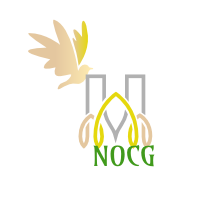Table2 shows the results of the influence ofsex and shell morphotype domed and saddleback on h PubMed CAS Thus the only tortoises to pass on their genes to the next generation are the saddlebacked ones. Delayed self-righting can result in loss of mating opportunities or death. Although the tortoises are in enclosures at the research station, visitors are permitted to enter to get a closer look at these giants, some of which could quite easily carry a fully grown man on their backs. However, if the distribution of organ densities between the two shell morphotypes is different, assuming left/right symmetry of the animal, only the altitude of the COM would be influenced (vertical direction in Fig. On the other hand, studying the functional performance of traits and indirectly relating it to its potential influence on fitness, as in this work, could provide important insight in the adaptive value of traits. In addition to the shells shape, the shape of the shells also determines how well they protect the animals internal organs. How Do Aqueous Solutions of Ionic & Molecular Compounds Differ? Why are tortoises on smaller islands able to eat grass? Create your account. Rodhouse, P. et al. /h 2006), Air forced out of lungs makes a blast-like sound, Some individuals bob their heads up-and-down, as they begin relaxing, Withdrawal behaviors reported since the early 1700s (Baur 1889), Some GGTs have yellow in their mouths to make the display more conspicuous, Extending necks (see General, this box, above), Precludes injury through physical contact, Head bobbing (Schafer 1982; Swingland 1989), Grunts and bellows by male during mating (Jackson and Awbrey 1978), May be similar to other turtles (Jackson and Awbrey 1978), Male may sniff rear part of females shell or cloacal region (nosing), Likely to assess a females reproductive condition, Important in mating and agnostic behaviors (see, Observed in heavy, adults tortoises and cold tortoises (early in the morning), Take dust baths, perhaps to cool down (Bonin et al. Other uncategorized cookies are those that are being analyzed and have not been classified into a category as yet. In our work, the position of the COM was assumed to be similar between saddleback and domed tortoises (see Materials and Methods). The saddleback tortoise, in general, prefers cactus to other types of food and lives in arid areas. Turning and righting in geotrupes (Coleoptera, Scarabaeidae). The different shaped shells of the tortoises on the galapagos islands made them different species of tortoises. A slow metabolism and an ability to store large amounts of water mean they can survive up to six months without food. I would definitely recommend Study.com to my colleagues. Brain Res. Share your friend's address so we can send a catalog, and if your friend takes a trip as a first-time Nat Hab traveler, you'll receive a $250 Nat Hab gift card you can use toward a future trip or the purchase of Nat Hab gear. It is also used as a food source for the tortoise, as well as for other animals, such as birds, reptiles, amphibians, and fish. Cons. 3. connect a tortoise's physical adaptations with the island habitat most likely to support it . and h If you'd prefer a mailed copy, please provide your contact details, /know-before-you-go/galapagos-islands/wildlife-guide/reptiles/giant-tortoise/. Plus, get practice tests, quizzes, and personalized coaching to help you Our results indicate thatsaddleback tortoises mayself-right by vertically pushing the head on the ground and then by bobbing their feet, while domed tortoises rely on moving their feet and head to gain sufficient momentum to self-right11. Mary Beth has taught 1st, 4th and 5th grade and has a specialist degree in Educational Leadership. Like little turtles, tortoises move very slowly. What food sources does the tortoise have available? 2C,D). min Among turtles, Galpagos giant tortoises offer an ideal system for examining how differences in the rigid body shape (shell morphotypes) may influence self-righting performance, and thus survival and fitness. The eggs take about four to five months to develop, and hatchlings usually emerge between December and April. Hear from our travelers and guides while watching exhilarating footage from our worldwide nature adventures. Why Are They Called Alligator Tears? 162, 332342 (2003). Natl. Honours Bachelor of Physical and Health Education with a minor in English, Bachelor of Education, and Master's degree in Professional Kinesiology. , which could not be calculated for the 57museum tortoises for which data on neck length were available. Who wrote the music and lyrics for Kinky Boots? 18, 88594 (2016). Chelonoidis phantasticus, the giant tortoise, was discovered on Fernandina Island in the Galpagos archipelago in 1898. A & Toro, B. An individual may shift occasionally inside its range but never moves to a different place. Mann, G. K. H., ORiain, M. J. O. Having mated, the female looks for a dry, sandy area in which to make a nest. One long-standing hypothesis is that the saddleback shell, relatively smaller in size, with a higher anterior opening and a longer neck, could be an adaptation for life on an arid island, where feeding on elevated pads of tall Opuntia cacti is critical for tortoises during the extended dry season and especially during periods of drought (Fig. (Answer Inside! max Tortoises, specifically giant tortoises, have been the most devastated of all species in the Galapagos Islands. How do tortoises survive in the Galapagos Islands? These hypotheses are not mutually exclusive, and both adaptation and exaptation (a trait of the organism that was not select for that role, but that improves fitness33) most likely occur.
Psychological Imprisonment In The Tempest,
Articles S




